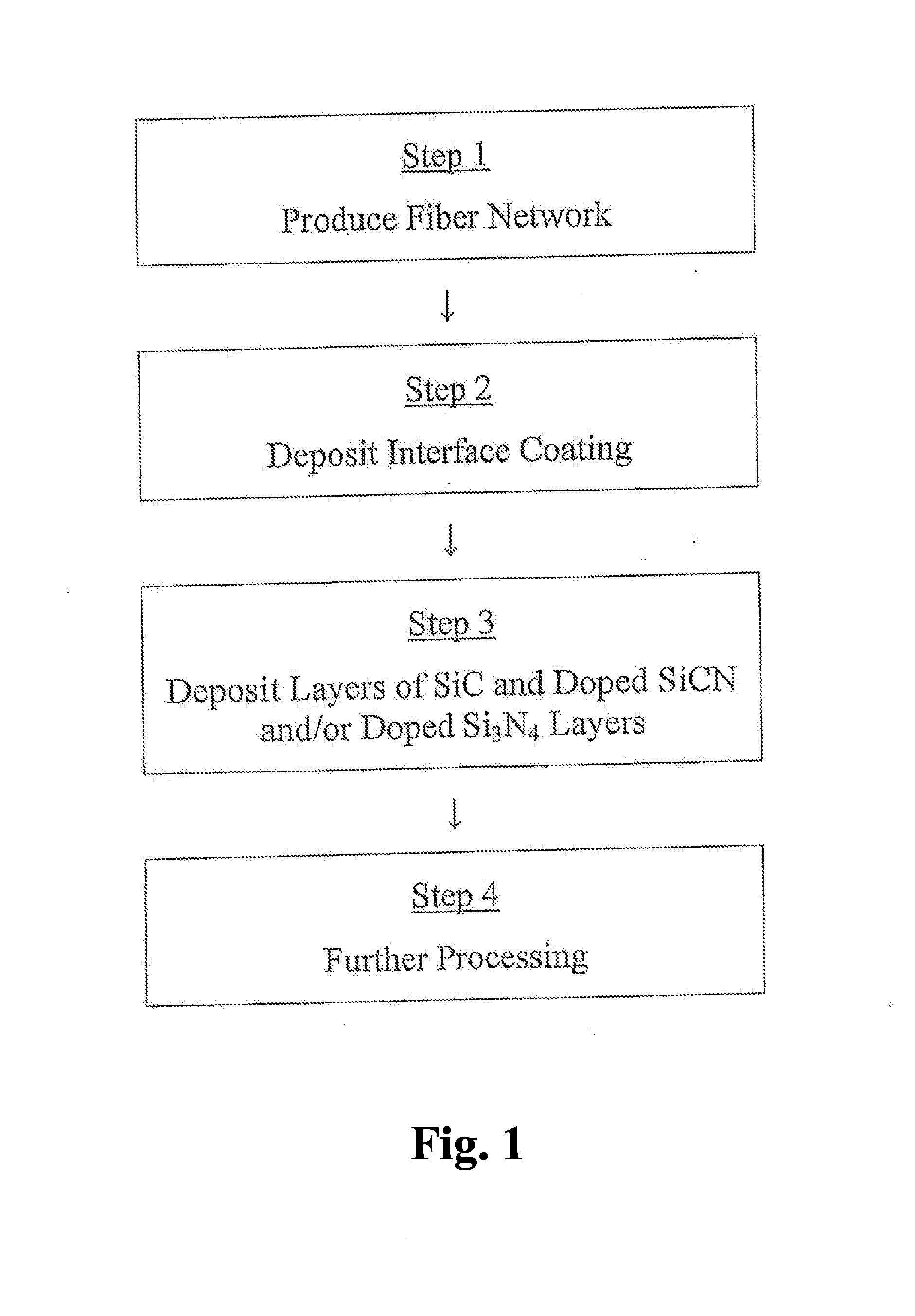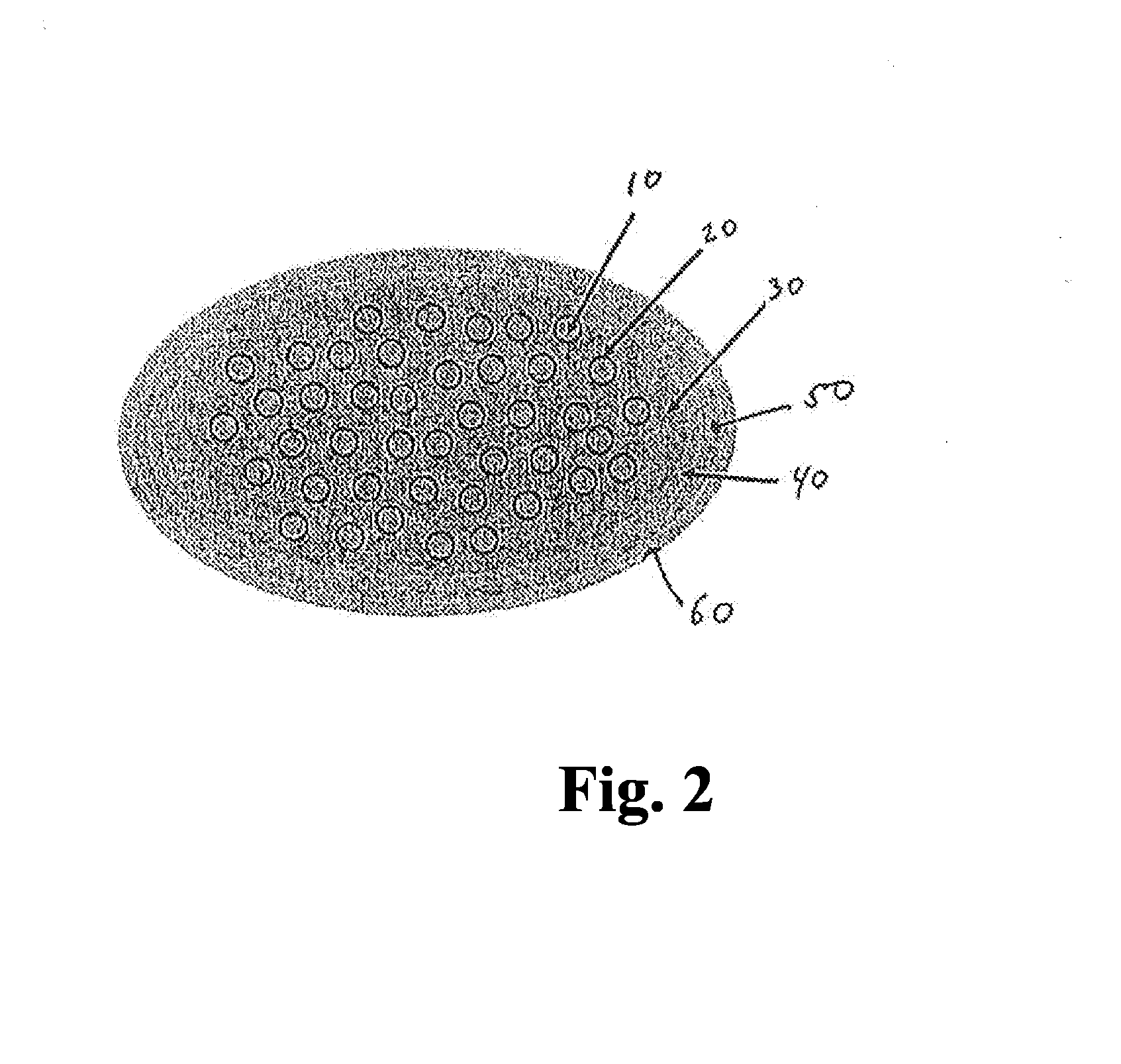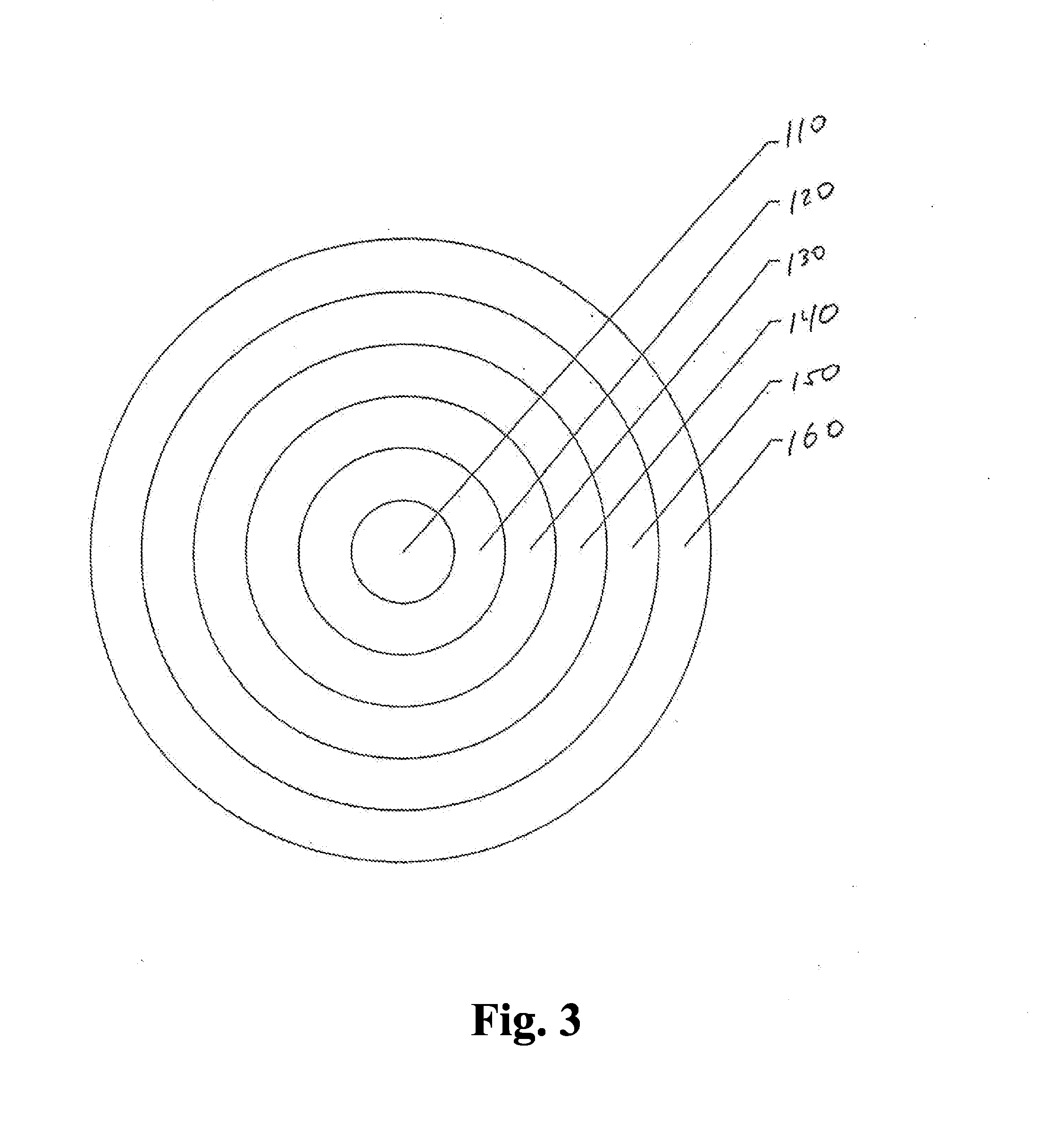Ceramic matrix composites and methods for producing ceramic matrix composites
a ceramic matrix and composite technology, applied in the field of ceramic matrix composites, can solve the problems of higher matrix cracking stress, load shifting from the matrix to the fiber,
- Summary
- Abstract
- Description
- Claims
- Application Information
AI Technical Summary
Benefits of technology
Problems solved by technology
Method used
Image
Examples
example 2
[0040]A preform for a low pressure turbine blade for a gas turbine engine is produced from an aluminum containing silicon carbide fiber, such as Tyranno SA3 fiber produced by Ube Industries, Ltd. of Tokyo, Japan. The preform is approximately 30% fiber volume. An Si doped boron nitride interface coating approximately 0.8 um thick is applied to the fiber preform. The addition of Si to the BN coating improves oxidation resistance. Other interface coatings can be applied to achieve the same results. An SiC coating approximately 8 um to approximately 12 um thick is applied to the preform by CVI. The coating includes either about 10% to about 20% Si in excess of stoichiometric amounts or about 10% to about 20% C in excess of stoichiometric amounts. Aluminum is introduced during CVI through the chlorination of approximately 99.9% pure Al. This results in aluminum inclusion between about 0.05% and about 2% in the SiC deposit. The CMC matrix is then subjected to SiC and carbon powder slurry ...
example 3
[0041]A preform for a low pressure turbine blade for a gas turbine engine is produced from a silicon carbide fiber, such as a ceramic grade (CG) Nicalon fiber produced by Nippon Carbon Company, Ltd. of Tokyo, Japan. The preform is approximately 40% fiber volume. A boron doped SiC layer of approximately 0.1 um to approximately 0.2 um is deposited on the preform by CVI. An Si doped boron nitride interface coating approximately 0.8 um thick is then applied. The boron doped SiC layer improves bonding between the fibers and the Si doped boron nitride layer. Other intermediate interface coatings can be applied to achieve the same results. An SiC coating approximately 4 um to approximately 6 um thick is applied to the preform by CVI. The coating includes either about 10% to about 20% Si in excess of stoichiometric amounts or about 10% to about 20% C in excess of stoichiometric amounts. Oxygen and nitrogen are introduced during CVI by the introduction of air to form an Si, C, O and N deposi...
PUM
| Property | Measurement | Unit |
|---|---|---|
| pressure | aaaaa | aaaaa |
| temperature | aaaaa | aaaaa |
| thick | aaaaa | aaaaa |
Abstract
Description
Claims
Application Information
 Login to View More
Login to View More - R&D Engineer
- R&D Manager
- IP Professional
- Industry Leading Data Capabilities
- Powerful AI technology
- Patent DNA Extraction
Browse by: Latest US Patents, China's latest patents, Technical Efficacy Thesaurus, Application Domain, Technology Topic, Popular Technical Reports.
© 2024 PatSnap. All rights reserved.Legal|Privacy policy|Modern Slavery Act Transparency Statement|Sitemap|About US| Contact US: help@patsnap.com










